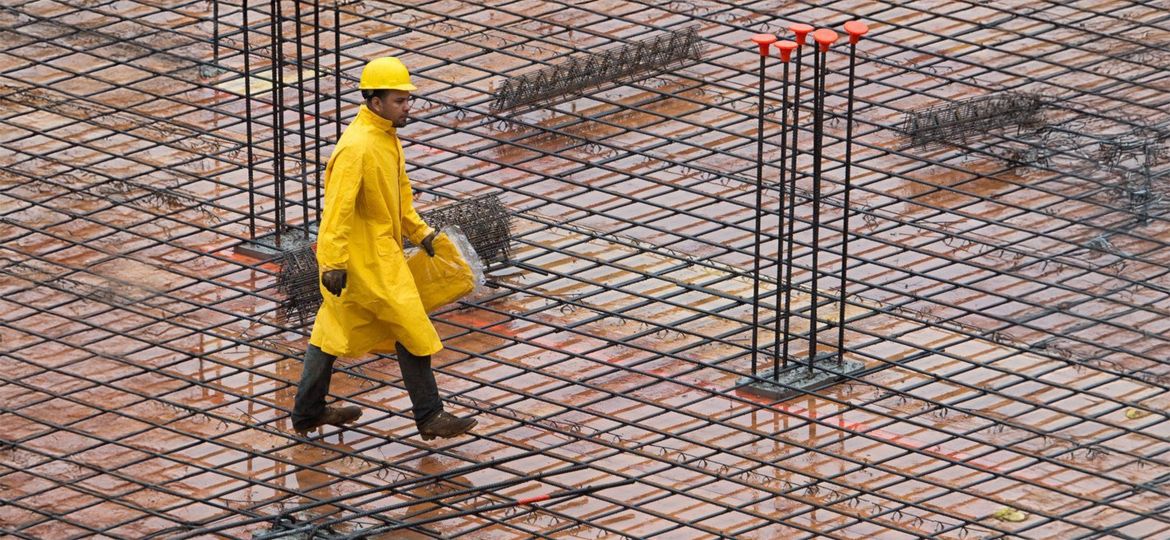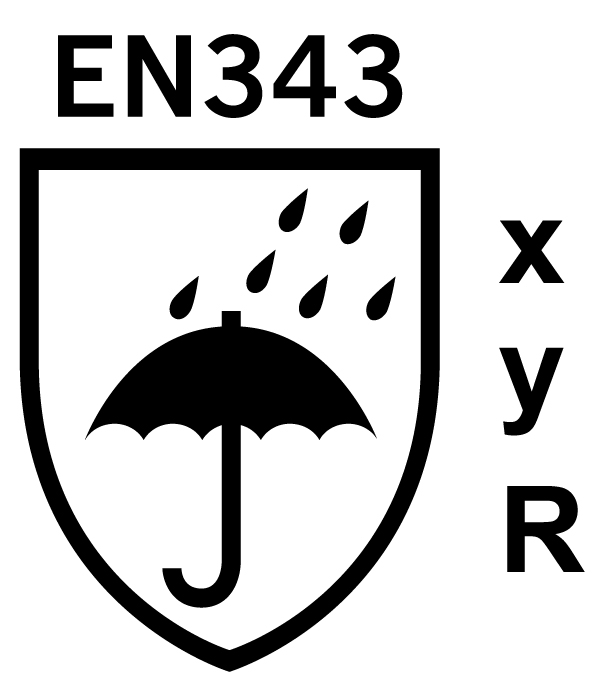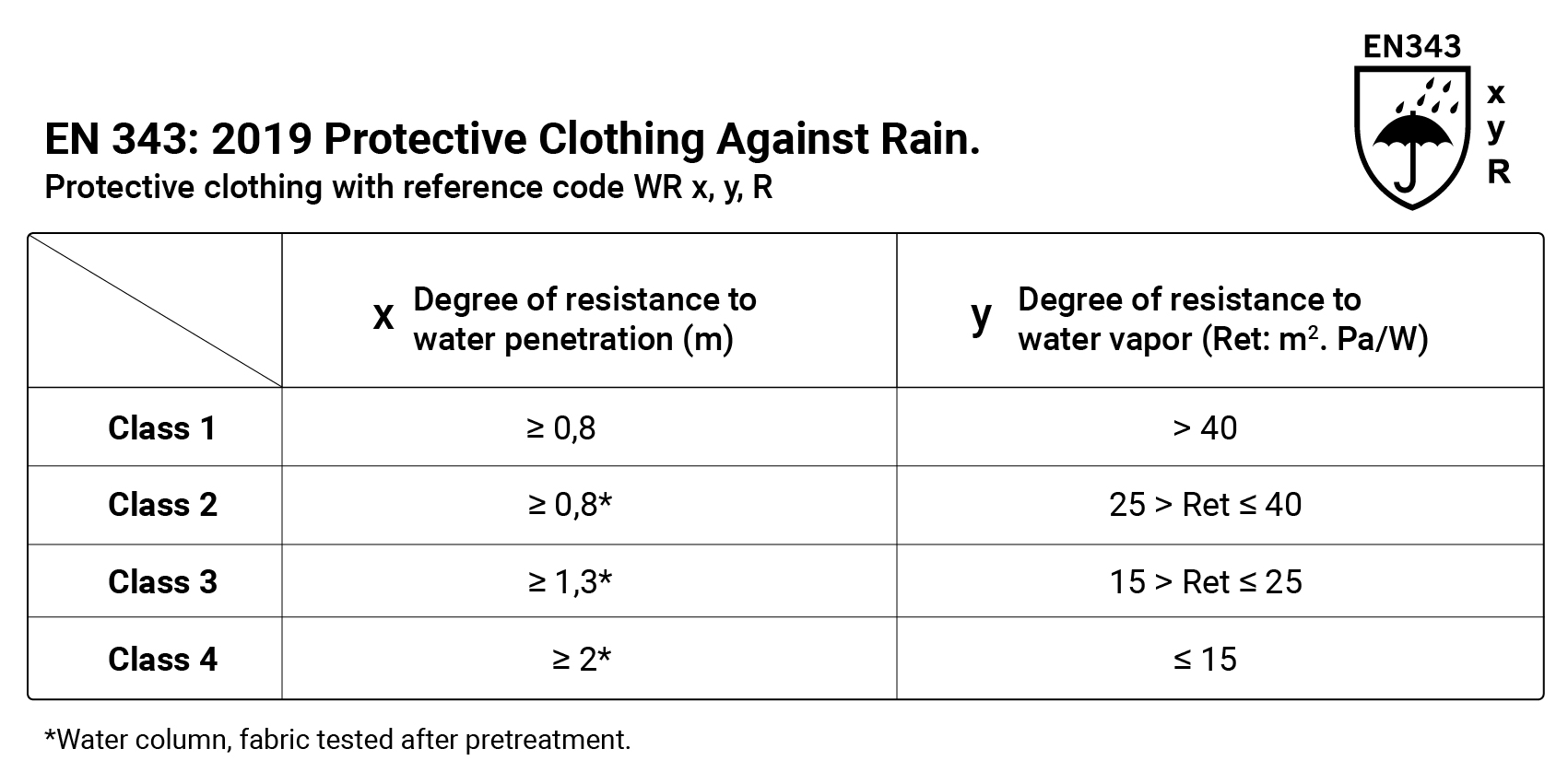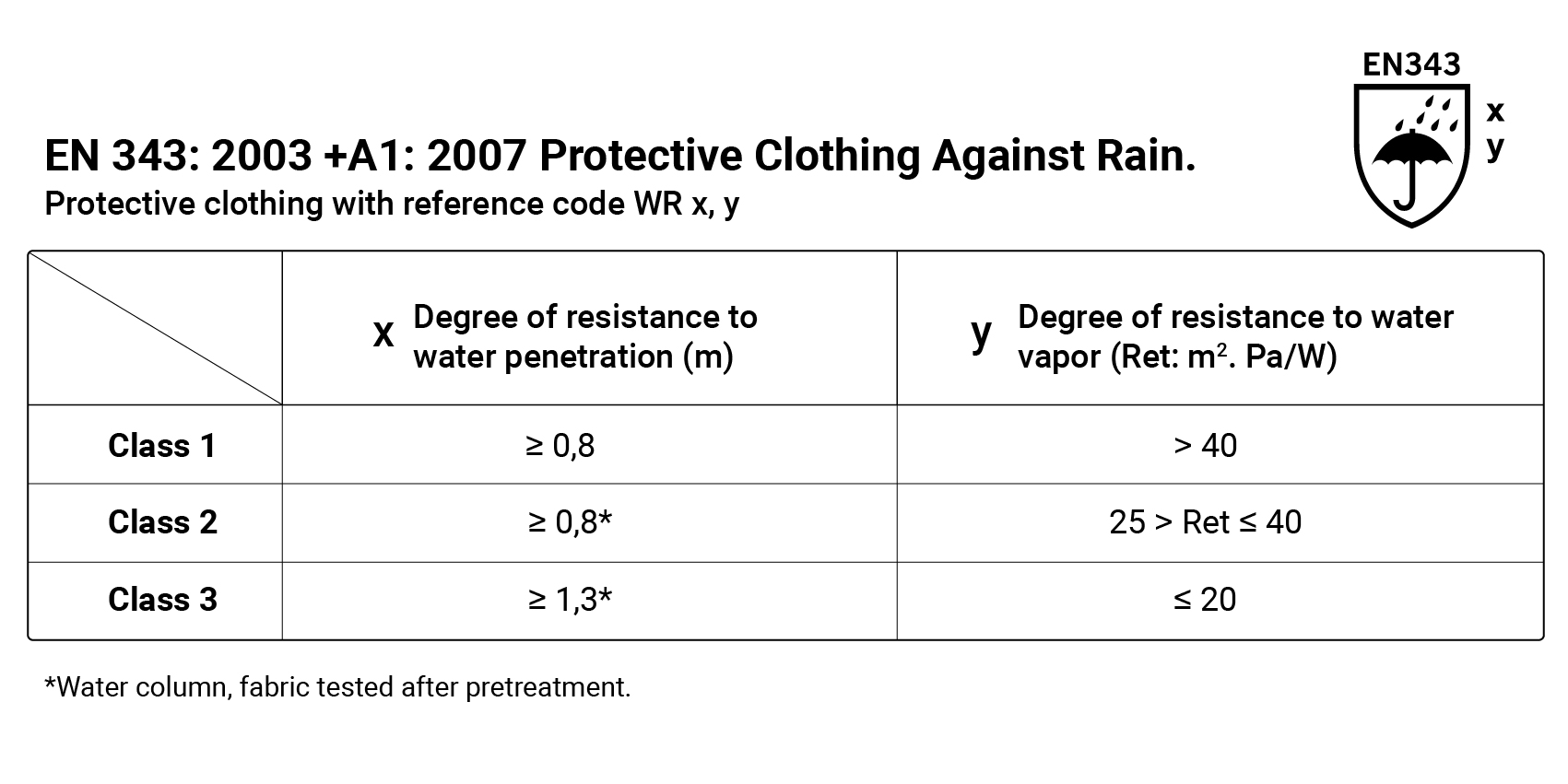
UNE-EN 343: Protective Clothing Against Rain
UNE-EN 343:2019 is the European standard that defines the characteristics of protective clothing against rain and humidity, as well as the level of resistance to water vapor.
The UNE-EN 343:2019 standard is defined on the basis of two fundamental characteristics: waterproofness and breathability. Let’s take a closer look at both concepts.
Waterproofing
When we talk about the waterproofing of a garment, we are referring to a product that, due to the characteristics of its materials (fabrics, seams, zippers, etc.), does not allow water to penetrate it under specific conditions. In short, it prevents the wearer from getting wet in rainy or humid conditions.
Breathability
Breathability defines the degree of resistance offered by the fabrics of a garment as a whole to the evaporation of sweat. The lower the breathability of a garment, the lower the possibility of evacuating excess heat generated during activity. Conversely, the higher the breathability, the lower the evaporative resistance offered by the garment, and the more the garment “breathes”, i.e. evacuates excess heat.
Waterproof vs. breathability
If waterproofness is synonymous with “watertightness” from the outside to the inside of the garment, when we refer to breathability we are talking about a certain degree of “permeability” from the inside to the outside of the garment.
It is easy to see that these are opposing needs. This is why specific fabrics such as goretex are used in the manufacture of these garments, which, thanks to their specific molecular structure, take advantage of the difference in size that exists in water molecules depending on their liquid or gaseous state. The differential characteristic of these materials is that the pores of their structure are smaller than the water molecules in the liquid state, but larger than the water molecules in the gaseous state, which allows water vapor to pass through the fabric and escape to the outside.
Other concepts that are important to know:
Water-resistant garments.
They are not waterproof. They protect us against light rain, but if it is heavy or persistent, we will end up getting wet.
Water-repellent garments
They are not waterproof either. Water slides off due to a special chemical treatment on the surface of the fabric. They are even less resistant than water-resistant garments, so they are only suitable for situations with medium-low humidity, light, intermittent and short duration rain. In other situations, water will penetrate the fabric of the garment.
Standard Specifications
Now that we have explained the different concepts, let’s explain what the standard says.
To make sure that a garment complies with the requirements of the standard, we must check that the garment is marked with the required pictogram, followed by the standard number and the relevant classes for each requirement.

Current standard
EN 343:2019. Protective clothing against rain.
Next to the pictogram identifying compliance with the standard (see graphic) there are three indicators (x, y, R).
The top indicator (“x” value) refers to the degree of resistance to water penetration (water resistance), the middle indicator (“y” value) indicates the degree of resistance to water vapor (breathability). Both indicators are evaluated in a class from 1 to 4, from less to more waterproof and from less to more breathability. Finally, the bottom indicator may contain an R or an X and indicates whether the garment has been subjected to the rain tower test. This test is optional for certification. The R indicates that the test has been performed, the X indicates that it has not.

Current standard: UNE-EN: 343:2019.
Previous standard
EN 343:2003 +A1:2007 Rain protection.
(Although it is still possible to find garments with this certification, the approval of EN 343:2019 has replaced this standard.)
In this case, next to the pictogram identifying compliance with the standard (see graphic) there are only two indicators (x, y). The upper indicator (“x” value) refers to the degree of resistance to water penetration (water resistance), the middle indicator (“y” value) indicates the degree of resistance to water vapor (breathability). In this case and unlike the current version of the standard, both indicators are only evaluated in a class from 1 to 3.

Previous standard: UNE: 343:2003.
“Contact our specialists. They will provide you with all the information you need.”
Conclusions
Waterproof garments are only those that are impenetrable to water. The production of such garments is different from those that only offer some degree of resistance. The construction, fabric, seams, sleeve and hood closures will be sealed and use special materials. The manufacturing processes, materials and cost are much higher than those offering only a degree of water resistance.
EN 343-certified products have also been tested, among other things, for tear resistance and elasticity, where the various layers of the product have been tested for their ability to retain their shape after prolonged use.
In other words, EN 343-certified garments are suitable for people who will be working in rainy or bad weather conditions, both persistent and extreme.
The sectors that carry out their activities mainly outdoors or in persistent wet conditions are the usual users of this protective equipment.
Contact us:
At Pertesa we offer you a wide range of high visibility clothing and garments that are suitable for use in any cold conditions, whether environmental or industrial.
Our team of experts will advise you on the characteristics and materials depending on your activity, environmental conditions and applicable regulations.
We are a reference company in the Personal Protective Equipment (PPE) sector. We have a wide catalog and offer customized solutions.
You can contact us through our e-mail comercial@pertesa.com, or through the contact form you will find on our website.
